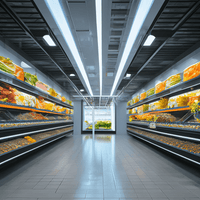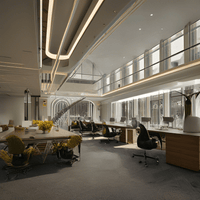How to Use LED Light Bars to Create a Modern and Stylish Kitchen
Introduction
LED light bars offer many benefits for residential kitchens. They provide bright, energy-efficient illumination that can transform the look and functionality of your cooking space. With the right design and placement, LED light bars create a modern, stylish kitchen ambiance while meeting all your lighting needs.
Compared to traditional lighting, LEDs consume up to 80% less energy while lasting 25 times longer. They also produce minimal heat and contain no toxic materials. LEDs come in a range of color temperatures and beam angles to provide versatile, customizable lighting. Thoughtful use of LED undercabinet lighting, pendants, and accent lighting creates a contemporary kitchen suited for cooking, entertaining, and relaxing.

Four Ways to Choose the Right LED Light Bars for Your Kitchen
1. Brightness and lumens output needed
The lumens output, or brightness level, of an LED light bar determines how much illumination it will provide in your kitchen space. Most under-cabinet lights require between 200-500 lumens to properly light counter and cooking areas. Overhead pendant or island lights typically need 500-1000 lumens to adequately light the entire workspace.
You'll also want to consider the size and layout of your kitchen. Larger, open concept kitchens may need brighter lights, while smaller, galley-style spaces can utilize lower lumen options. Assessing your specific task areas like the sink, range and prep zones will help you determine the optimal brightness level. LED light bars list their lumen output, so compare options to your kitchen needs.
2. Dimming capabilities
Some LED light bars have built-in dimming capabilities, allowing you to adjust the brightness for various situations and tasks. Other require a compatible remote control to dim. Having a dimmable option provides flexibility-you can set dramatic mood lighting or bright task lighting with a simple adjustment.
This is a useful feature if you want control over the kitchen's ambiance. Consider your budget as higher-end dimmable lights may cost more upfront.
3. Color rendering and temperature preferences
LEDs come in a range of color temperatures, from warm amber to crisp cool daylight. Choosing the right tone sets the entire mood of the kitchen.
Warm white or soft white LEDs (2700K-3000K) create a cozy and inviting atmosphere perfect for traditional kitchen designs. For a bright and energizing kitchen, you can opt for cool white LEDs (3500K-4100K). Natural white (3000K-4000K) offers flexibility for both ambiance and visibility.
Tunable LEDs allow you to adjust color temperature via app or voice control. This enables you to tune lighting from warm ambiance to cool, clinical daylight and back as needed. Tunable LED fixtures are more appropriate to be installed in multipurpose zones like kitchen islands or dining areas.
For visual accuracy, you can choose cooler LEDs with a color rendering index (CRI) of 90 or higher. This allows you to differentiate ingredients and finishes under the lighting. Many LED fixtures are able to tune color via app or voice controls. This enables you to adjust the lighting from warm to cool or vice versa to transform the look and feel of the space.
4. Hardwired vs. plug-in options
Hardwired LED light bars involve a permanent installation, with the lights being directly wired into your home's electrical system. This is usually done during a renovation by an electrician.
The benefits of hardwired options include higher lumen outputs since they aren't limited by plug-in wattage restrictions. They also won't require replacing batteries. Hardwired lights can often provide brighter, more even illumination suitable for large kitchens or primary task areas.
Some drawbacks are that hardwiring is not a DIY-friendly installation and may require additional electrician fees. The lights also cannot be easily removed.
Plug-in LED light bars simply plug into an existing wall outlet via an included power cord. They are convenient for renters or those not ready for full renovation. Installation only requires finding an outlet-no electrical work.
However, plug-in lights typically have lower maximum lumen outputs, around 200-300 lumens. This may not provide adequate light for large kitchens or intense tasks. The cords can also look less polished than a hardwired installation.
When deciding between the two, consider your needs, budget, and whether you plan to remain in the home long-term. Hardwired is best for committed homeowners seeking maximum light levels. Plug-in offers flexibility for those who may move more frequently.
Conclusion
Incorporating LED light bars is an excellent way to transform a kitchen into a modern, stylishly lit space. Their sleek designs complement contemporary aesthetics while providing uniform, brightness without glare or shadows. Homeowners have many placement and styling options to choose from depending on their kitchen layout and needs.
Read More
- Creating a Safe and Secure Workplace: The Use of LED Light Bars for Co – halconlighting
- Enhancing Visibility at Night: The Benefits of LED Light Bars for Park – halconlighting
- Streamlining Warehouse Operations: The Advantages of LED Light Bars fo – halconlighting
- The Role of LED Troffer Lights in Achieving Environmental Goals for Gr – halconlighting



